
New legislative ‘tools’ have been proposed to help establish more marine protection in the Gulf. Up until 28 October you can share your feedback with DOC on these proposals which support the restoration and conservation of important ecosystems.
... READ FEATURE

Kelp – a collective term for large brown algae species […]
... READ FEATURE
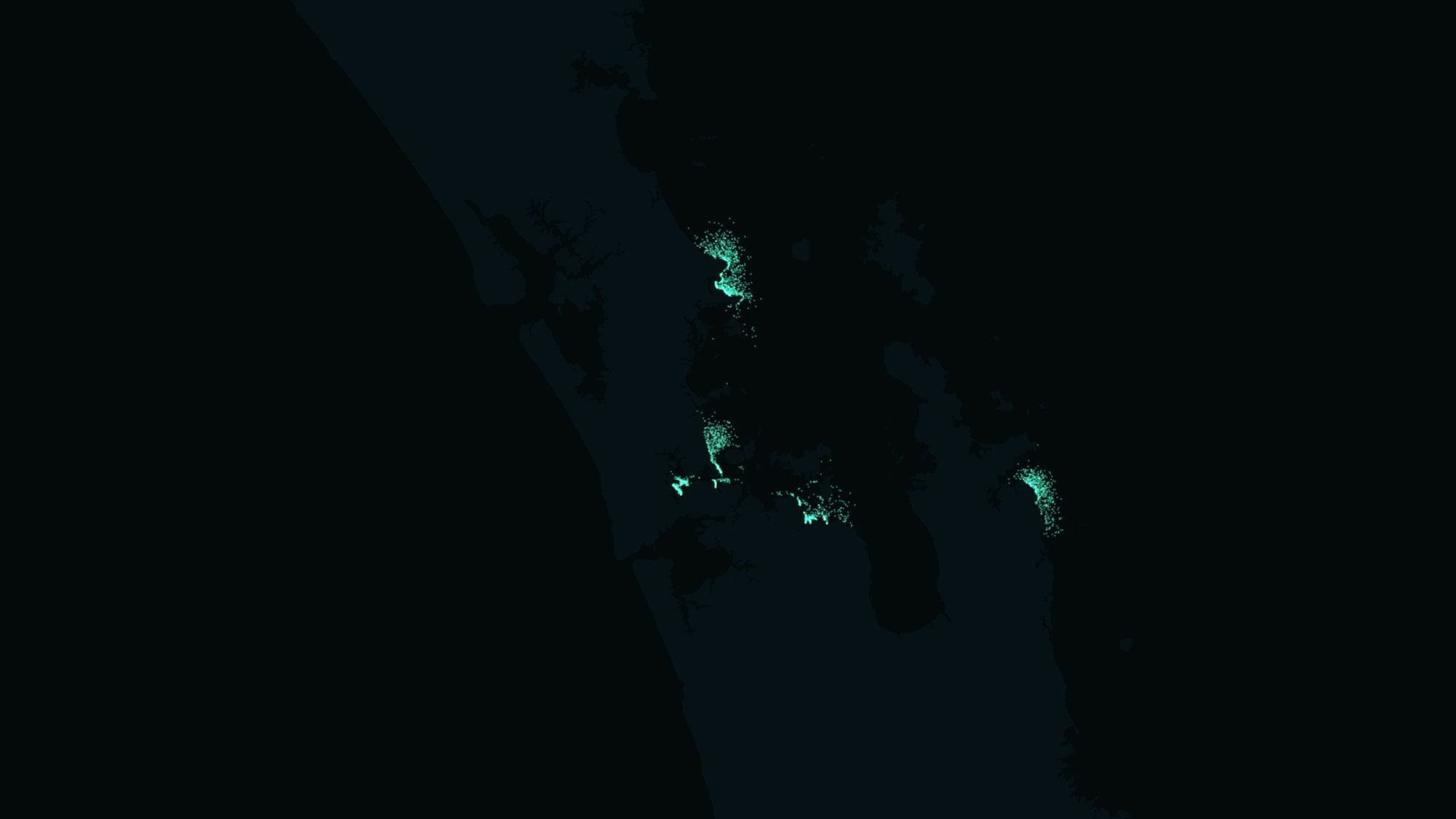
Shaun Lee shows how the Gulf and everyones mahi to fix it are connected through the movement of larvae.
... READ FEATURE
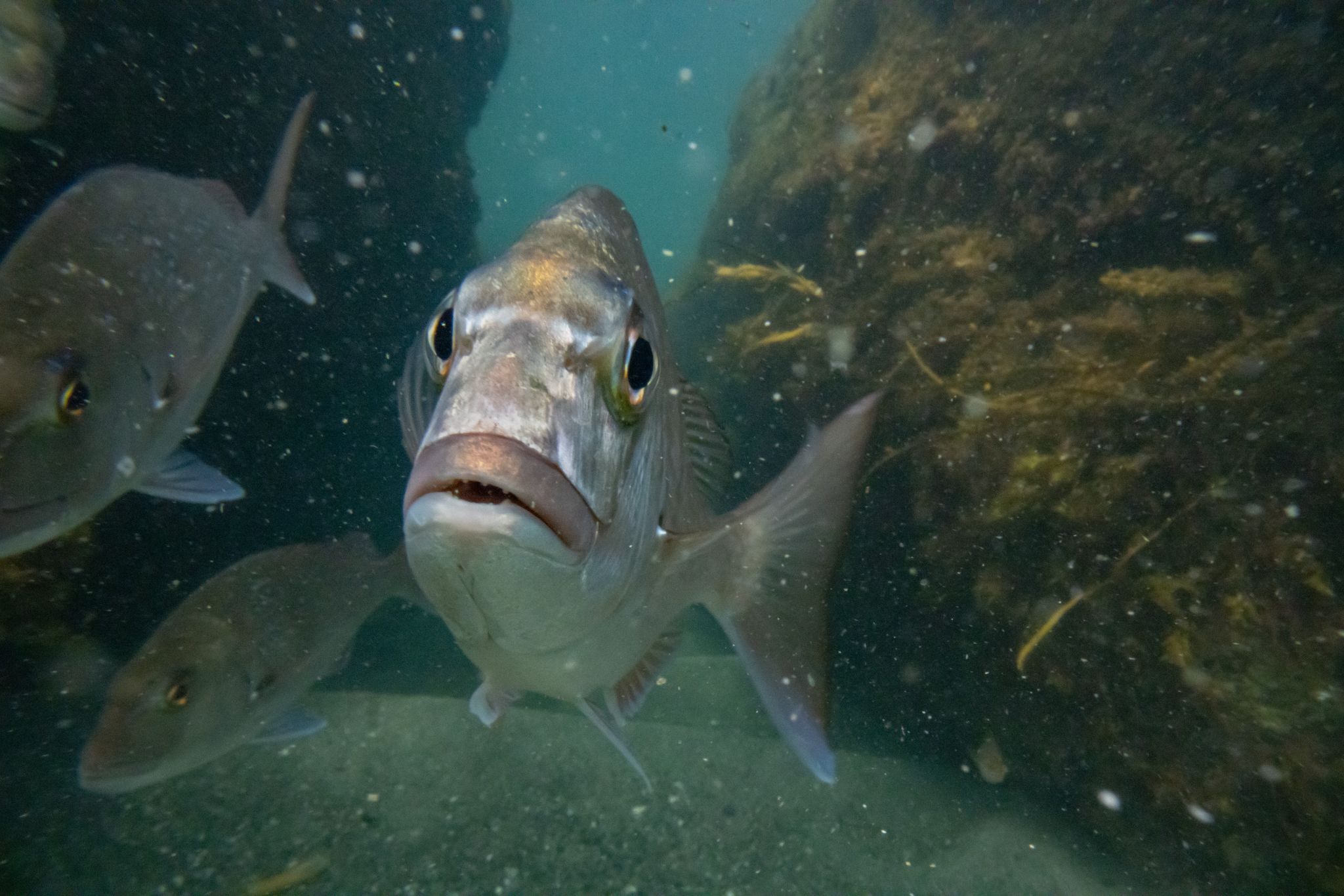
The government’s strategy, Revitalising the Gulf (or see the short […]
... READ FEATURE
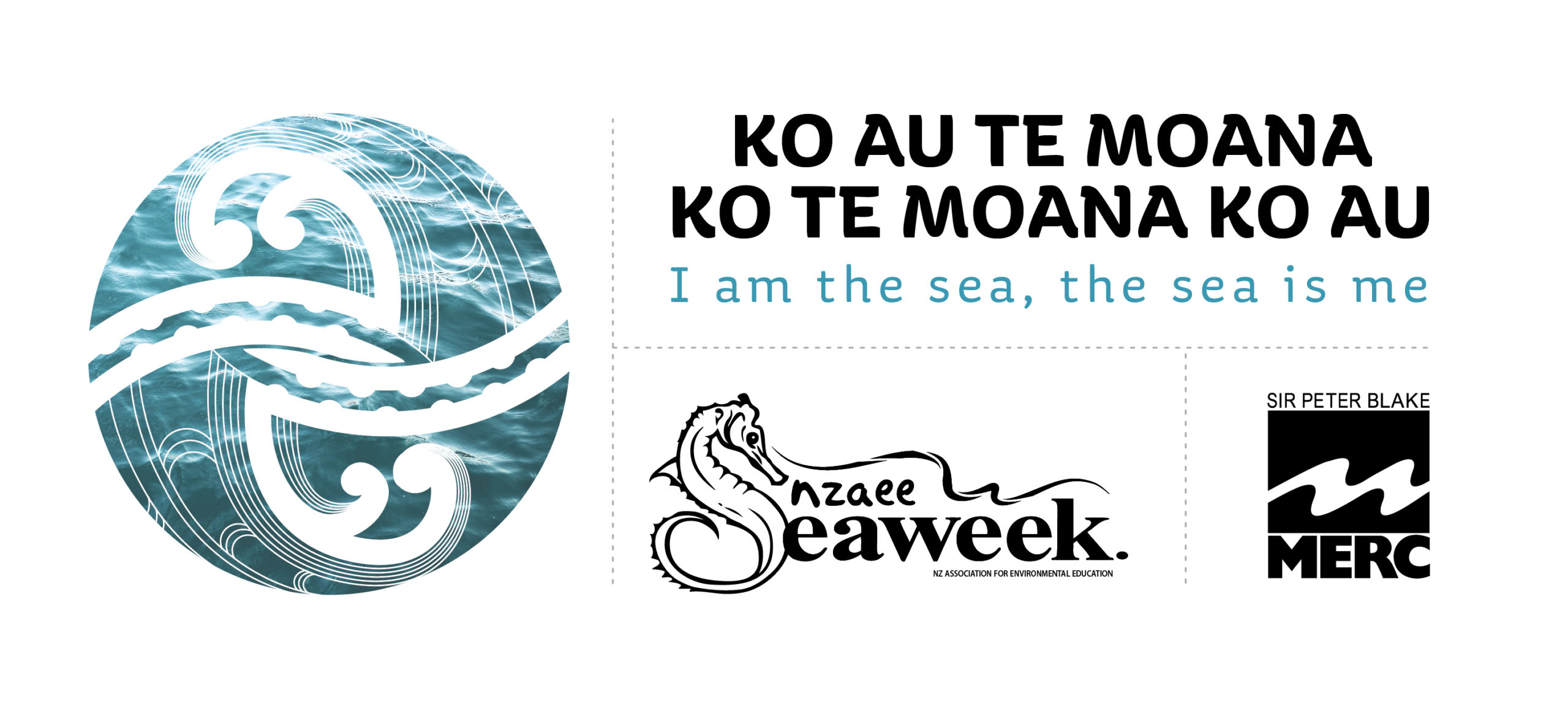
Seaweek is happening from Saturday 29th February to Sunday 8th March 2020! The theme for Seaweek this year is: Connecting with our Seas, Ko au te moana, ko te moana ko au – I am the sea, the sea is me.
Seaweek is NZAEE’s annual, national flagship event. This year NZAEE has partnered with Sir Peter Blake Marine Education and Recreation Centre (MERC) to deliver Seaweek. Through this collaborative effort the team at MERC are excited to engage with more people across the nation through their connection with the sea! Sir Peter Blake MERC was founded in 1990 and their mission is to provide life-changing marine environmental education and outdoor experiences for young New Zealanders. They feel that connection is an important thing to emphasize, particularly as these diverse but inextricable connections of our lives on land and life in the ocean support us.
Seaweek is the perfect opportunity to connect with the sea and NZAEE & MERC encourage you to take the opportunity to celebrate and learn more about our marine environment by taking part in an event or initiative near you. Events and activities are planned across the country – from art competitions, beach cleans, and coastal walks to guided snorkelling events, there is something for everyone! Keep an eye on the Seaweek website, Facebook page and Instagram to find events near you.
The annual Seaweek Ocean Champion Challenge requires entrants to undertake a specific ‘Ocean Challenge’ to help solve a problem in the marine environment. There are two categories; one for junior entrants under 16 years of age and an open category for all other entries. Entries for this year close 9 February 2020, and voting starts the next day for first, second and third for juniors and seniors – all other entrants still go in the draw to receive awesome prizes! For more details and to enter the Ocean Champion Challenge go to www.seaweek.org.nz!
Look on the Seaweek website to find event listings for your region, and if you are interested in hosting an event for Seaweek or have any questions about events in your region please contact seaweek@merc.org.nz.
Take the opportunity to let Seaweek help you promote your event or share your photos by tagging #Seaweek2020 on social media so they can shine a light on the awesome events and showcase the work you’re doing to protect our oceans.
NZAEE and MERC would like to thank Foundation North and the many generous sponsors who make Seaweek possible through financial support and in-kind donations.
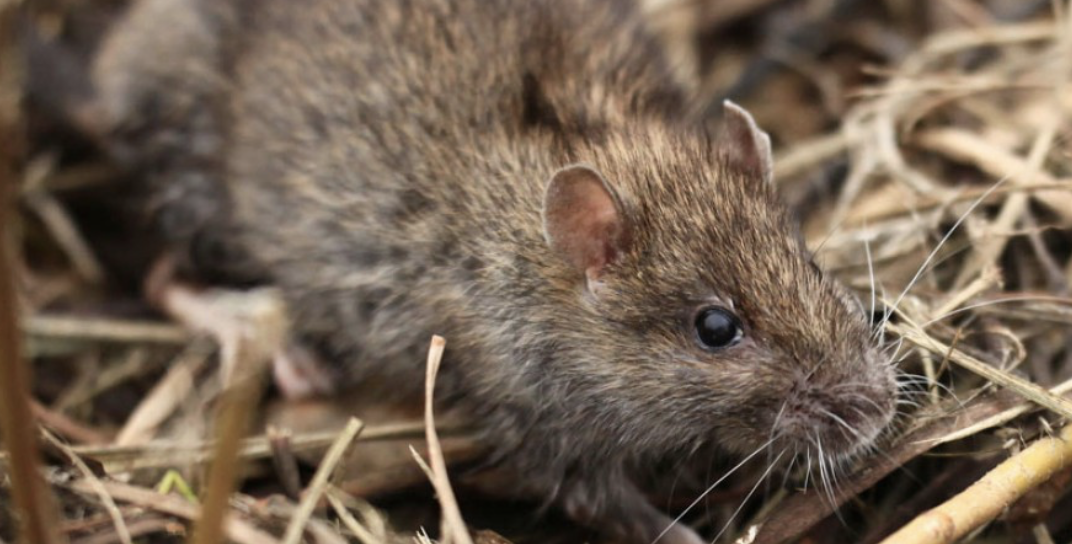
A partnership between Auckland Council, adhesives company Selleys, and peanut butter producers Nut Brothers is deploying 22,000 rat bait blocks and 160kg of peanut butter. The Talon wax blocks will be used in continuing trapping efforts on the Hauraki Gulf Islands and in remote rural areas as part of the Pest Free Auckland Programme:
According to Brett Butland, Auckland Council’s Pest Free Auckland Director, an unusually high seeding led to a wealth of food for native species. This has also fueled high populations of pests such as rats and stoats. These pests pose a serious threat to native wildlife as predator populations build up during the spring and summer months.
“We want to stay ahead of the game and ensure our predator free islands remain that way.”
“We know that rats prefer organic oils – like the ones contained in peanut butter – and they’re more likely to draw the pests to the bait stations. The rat bait and peanut butter work really well together.”
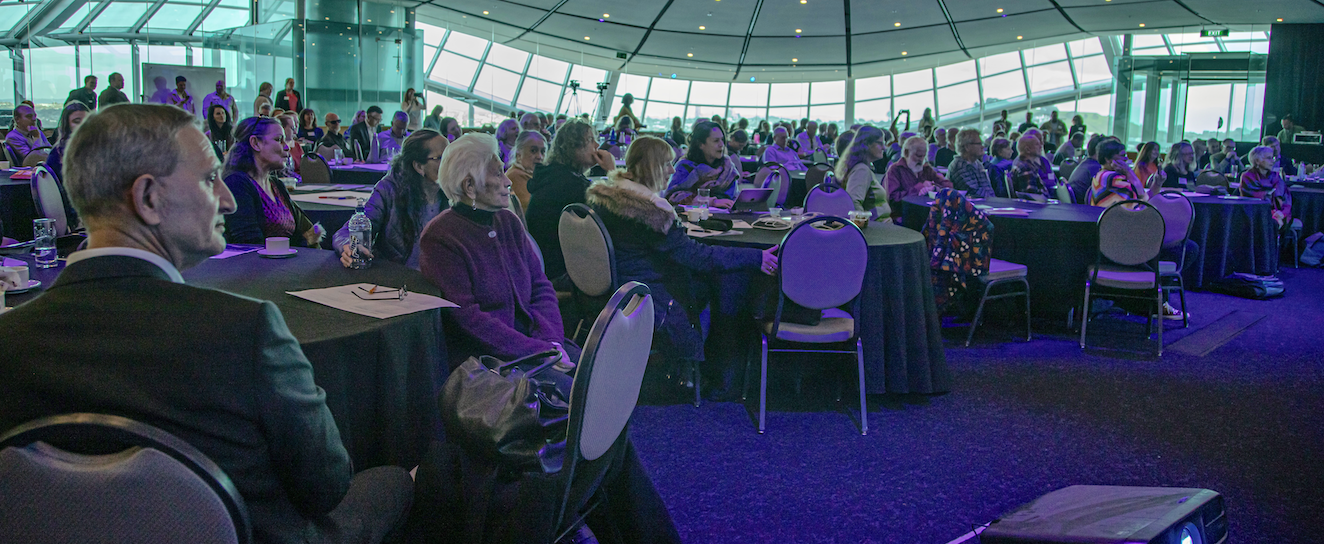
The 2019 Hauraki Gulf Marine Park Conference – Making Waves: Protecting and Restoring the Marine Park – saw over 250 participants flock to Auckland’s War Memorial Museum at the end of August. The annual event, which was held on August 27, saw an audience treated to a range of engaging and interactive presentations about the Marine Park which can be viewed here (http://gulfjournal.org.nz/seminar-talk/?seminar-name=2019-making-waves), but they also had the opportunity to participate in group sessions as a collaborative approach to further shape the Forum’s recently announced Big Goals of at least 20% marine protection and 1000sq kilometre of shellfish restoration.
The Holdaway Awards, which recognise extraordinary contributions to the Marine Park were presented to Betty Whaitiri Williams, former inaugural member of the Hauraki Gulf Forum, and posthumously to Roger Grace, marine biologist who passed away earlier this year.
The Conference also featured a keynote address from the Minister of Conservation at which the Government announced new funding for shellfish restoration (see: https://www.beehive.govt.nz/release/government-helps-fund-efforts-restore-shellfish-beds-hauraki-gulf) and several youth focused elements including a youth panel, virtual reality experience by NZ Geographic and BLAKE, and a view of the future from Young Ocean Explorers. Finally, conference participants worked together on the elements for a potential future vision for the Marine Park.
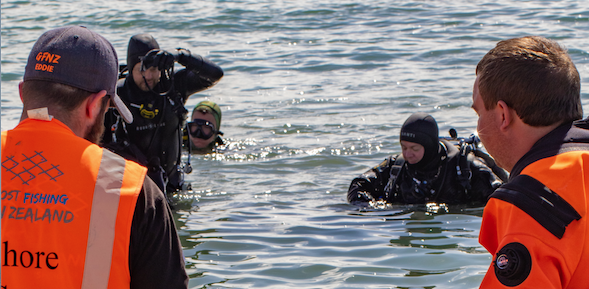
“In the 1980s I helped my Grandfather sink his old freezer in the harbour. It was a fun outing and a good challenge, afterwards I wondered what might inhabit the new white cave on the seafloor. Now days we all know better and I hate to think what toxic chemicals leaked out of that old machine and poisoned the bay,” anonymous New Zealander
A recent Ghost Fishing New Zealand event was held in Okahu Bay to help clean up the seafloor. The detrimental effects of lost fishing gear and rubbish was documented through video and photography.
Over the last four years, Ghost Fishing New Zealand (GFNZ) has worked diligently in cleaning open water spaces. These divers were inspired by overseas divers and named themselves after the ghost nets lost by commercial fishers that they retrieve. The team often pull tonnes of rubbish up from the deep in just a few hours using lift bags.
A station is set up at the event dedicated to sifting through the collection to extract mobile marine life from the rubbish.
“My job was to photograph the species as they were being removed by volunteers under the supervision of marine biologist Eddie van Halen Howard. Adults and children alike crowded around each piece of trash as it came ashore and Eddie enthusiastically identified and told stories about each animal,” – Shaun Lee
The highlight has to be this rarely seen Porcelain Crab (Petrocheles spinosus). It seems to be the first photograph of its species in the wild, though in this case the habitat had been moved.”
If you would like more information about Ghost Fishing NZ, please visit them here or better yet follow them on Facebook.

It was a momentous occasion.
A newly released book captures the significance of Hauturu Little Barrier Island and the ecological identity of this wonderful natural reserve.
Hauturu: History, flora and fauna of Little Barrier Island was launched at the Auckland Museum in September featuring key note speakers including editors Lyn Wade and Dick Veitch, along with The Little Barrier Supporters Trust patron Ruud Kleinpaste.
One of the evening’s highlights were the key insights, examples and experiences from the speakers who spoke about the historical significance of Hauturu and about the future of conservation in Aotearoa New Zealand.
Marine protection for the Hauraki Gulf was also noted as a shared vision for many who live, work and thrive on the Gulf.
Representatives of Ngati Whatua Orākei and Ngati Manuhiri also welcomed the crowd of several hundred attendees and highlighted the importance of Hauturu to mana whenua.
This important piece of literature is now available from booksellers nationwide. However, for those who wish to support the work of the Littler Barrier Island (Hauturu) Supporters Trust we encourage you to purchase a copy directly from the Trust.
For more information or to purchase a book, please follow the link below to the Trust’s website.
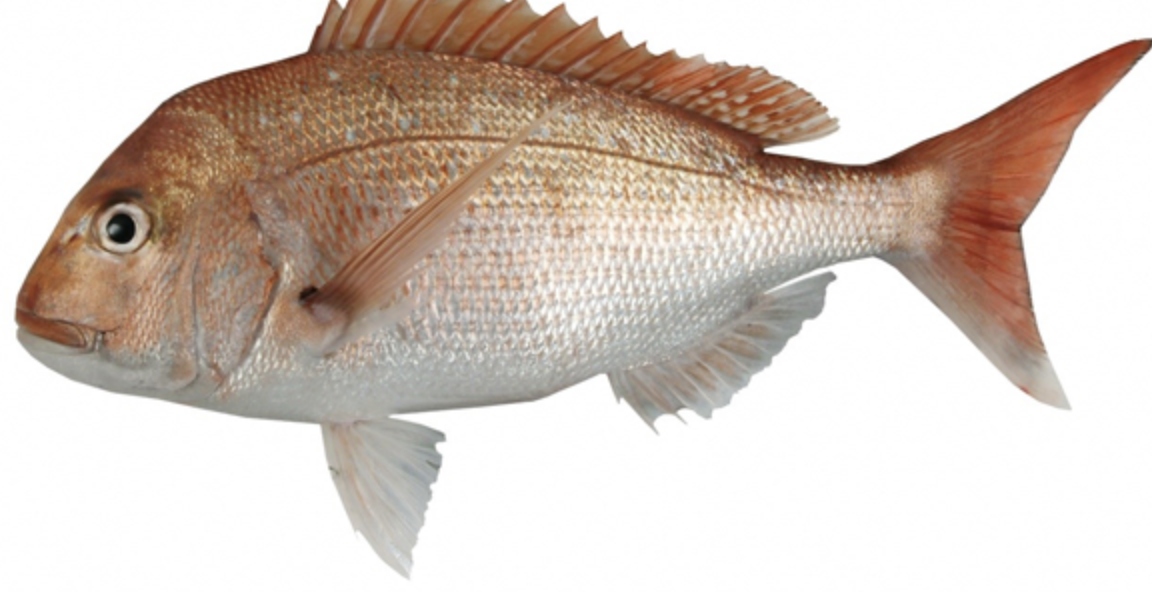
A Fisheries New Zealand national survey of recreational fishing has confirmed the ongoing importance of recreational fishing.
The National Panel Survey – which is conducted every 5 to 6 years – provides a snapshot of recreational fishing activity around the country, says Fisheries New Zealand director of fisheries management, Stuart Anderson.
“This is added to a wide range of other information to help us understand what is happening in our fisheries and inform our decision making over the next few years.
“One of the top-line results was confirmation of the ongoing popularity of recreational fishing. We estimate that 14 percent of the country’s population over the age of 15 years went fishing at least once during 2017-2018.
“We also found that recreational fishers catch a large proportion of key recreational fish species such as snapper, kahawai, blue cod, and kingfish. There’s been little change in the proportion of these fish caught by recreational and commercial fishers since 2012.”
The survey contacted more than 30,000 people and about 7,000 recreational fishers had their fishing outings recorded over a 12-month period.
The final results were confirmed by comparing different surveys conducted by the National Institute of Water and Atmospheric Research (NIWA) and the National Research Bureau (NRB).
Other key findings include:
- About half of all recreational fishing occurs around the north-east coast of the North Island along the coastline from the tip of Northland to East Cape.
- An estimated almost 2 million fishing trips were taken in 2017-2018.
- In 2017-2018, recreational fishers caught an estimated 7 million individual finfish and 3.9 million individual shellfish.
- In the Hauraki Gulf the average recreational snapper catch has seen a lot of fluctuation, almost tripling in the last 30 years, but trending down since the last survey in 2012.
- The average recreational kahawai catch has more than quadrupled in the Hauraki Gulf.
- Southland is the only area in the country where recreational fisher numbers appears to be increasing, by about 14%.
View the survey results
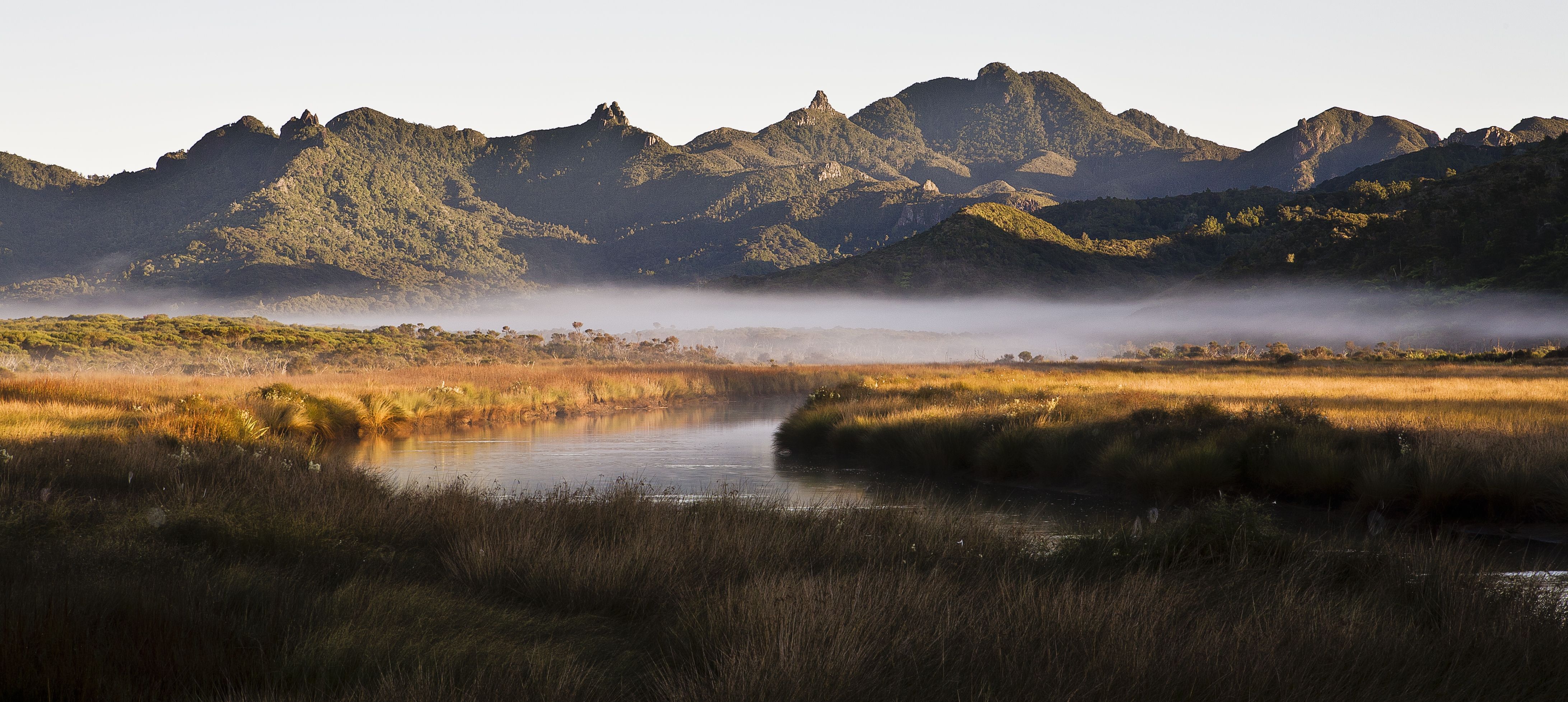
Take a peek into Chris Morton and Peter Malcouronne’s new book.
... READ FEATURE

Te Mana, te Ihi, te Tapu o Tikapa Moana
... READ FEATURE
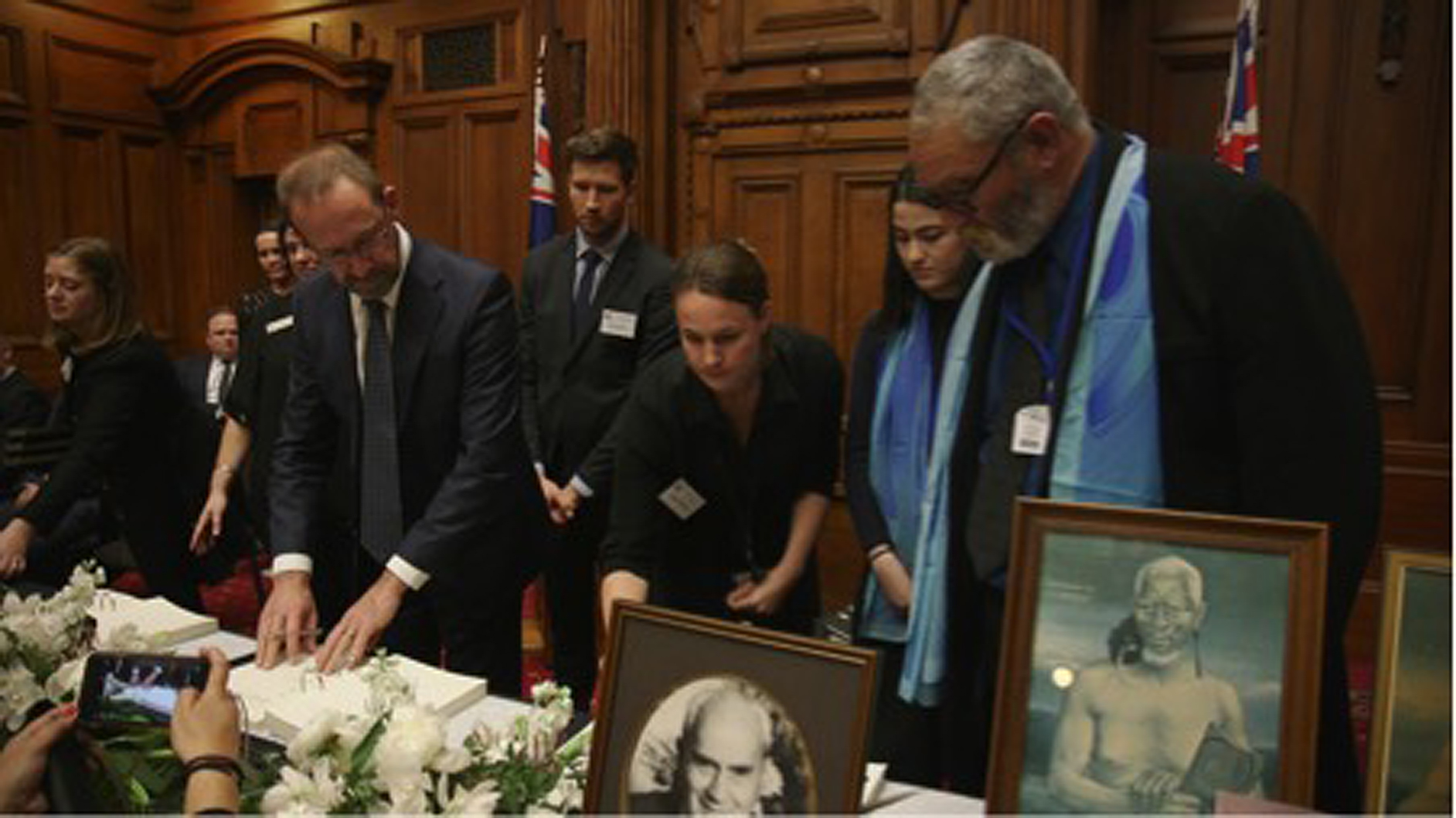
The 12 iwi of the Hauraki region have signed their Collective Treaty Settlement Deed at Parliament
... READ FEATURE

The Waikato land wars shaped our country and the Hauraki Gulf asserts historian Vincent O’Malley. Ahead of his presentation at next week’s Gulf Seminar he shares how his own background shaped his work.
... READ FEATURE
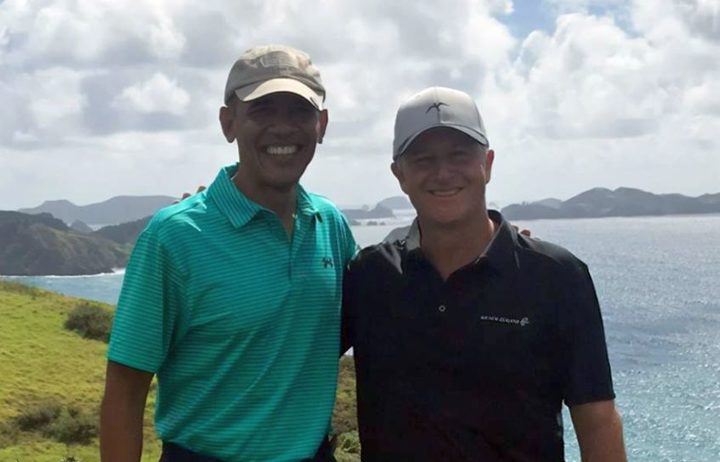
A luxury Te Arai development, still under construction, and likely to be marketed to wealthy Americans, will face the same curbs on overseas buyers as other developments around the country.
An exemption for the development was originally included in the legislation for the Overseas Investment Act, as it made its way through parliament, but was later struck out by Speaker of the House Trevor Mallard.
The Act is intended to put an end to speculator foreign ownership in the residential market.
The land, previously commercial forest, was part of a treaty settlement for northern iwi Te Uri o Hau and hapu Ngati Manuhiri who retain 25 percent holding in the project.
It then came to light former Prime Minister John Key had lobbied Forestry Minister Shane Jones to include an exemption.

Ngāi Tai ki Tāmaki Tribal Trust will get their day in court as they seek the sole rights to run tours on Rangitoto and Motutapu islands.
Currently Fullers Group Ltd have rights to transport and run tours, the Motutapu Island Restoration Trust to run tours with permission from the Conservation Department, with Ngāi Tai also running small tours. The Trusts appeal had been declined by the Appeals Court but can now go ahead after this Supreme Court ruling.
Read more here
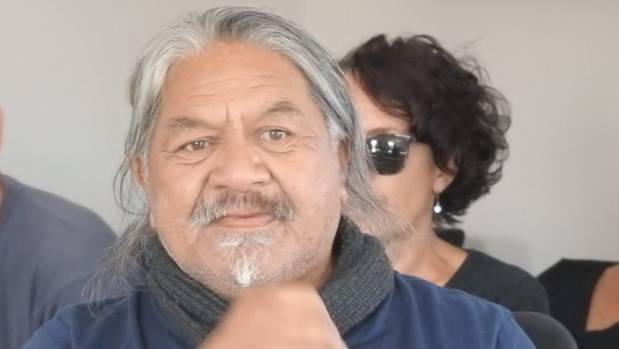
Ancient Maori bones unearthed on Waiheke Island are being kept at the police station ahead of reburial. More extreme weather events are leading to erosion and cliffs slipping on the island, and presenting a problem for local iwi Ngāti Paoa. Some of these bones being exposed are on private properties, but not all landowners are comfortable about them remaining on site. Ngāti Paoa representatives have approached the Waiheke Local Board to create new burial sites.
Read more here

A new report has been published. What has it found?
... READ FEATURE
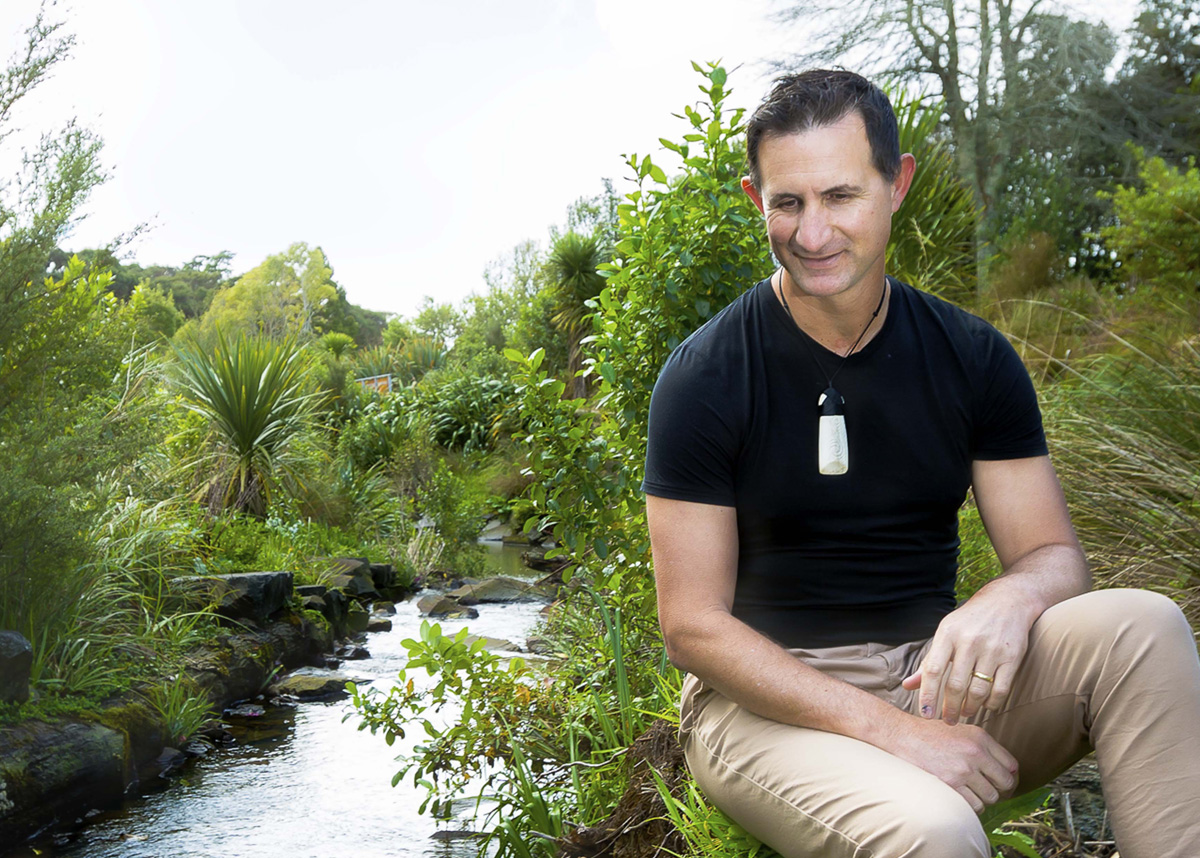
Dan Hikuroa hears a growing number of voices
... READ FEATURE
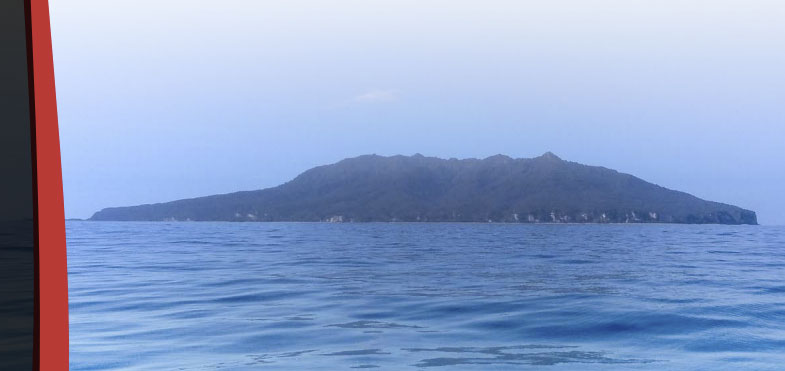
The Hauturu-ō-Toi / Little Barrier Island Nature Reserve Management Plan became operative on October 2 after approval by the Ngāti Manuhiri Settlement Trust and Auckland Conservation Board. The settlement legislation recognises Ngāti Manuhiri as kaitiaki, or guardian, of the nature reserve. The plan is the second post Treaty settlement management plan to become operative and be implemented. It provides DOC with a guide for managing the island, a safe haven for many critically endangered species and taonga for Ngāti Manuhiri. Read more here.

The story of the boats that supplied Auckland with kauri and fresh produce from the outer Hauraki Gulf islands will be told through an interactive multi-discipline exhibition at the Auckland Maritime Museum.
The scow Ida, and the cutter Te Rangatira, were owned by Tenetahi Pohuehue and Rahui Te Kiri of Pakiri (Ngāti Manuhiri and Ngātiwai) and sailed by their children.
These highly skilled sailors were often competitive and victorious in the Auckland Regatta.
Organiser Olivia Haddon says the focus of the programme is to “tell our tupuna stories to our mokopuna rangatahi as they are our future heroes” through workshops on traditional rope making, navigation and dancing to heritage.
The exhibition and workshops run from Oct 7-21 as part of the Auckland Heritage Festival

Ngāti Rehua is leading a project to eradicate pests from the Te Paparahi block at the north end of Aotea/Great Barrier, with the ultimate objective of seeing the return of kōkakō to the island.
The last kōkakō were removed in the early 1990s and transferred to Hauturu/Little Barrier.
The Department of Conservation is supporting the project through the DOC Community Fund. A feasibility study confirmed that the concept was achievable.
Planning work is currently underway to establish monitoring lines in the block and to assess the methodology for pest eradication.
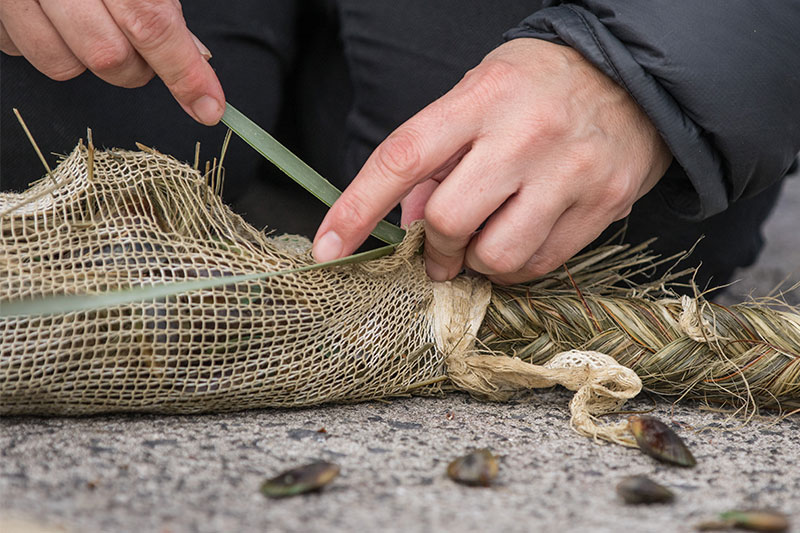
Weaving together traditional and aquaculture industry techniques will provide the best of both worlds for rope that will be seeded with mussels to be hung from the pylons of Ōkahu Bay wharf. This taura (rope) is intended to seed larger amounts of mussels into the bay over time by avoiding the sea floor which is covered in sediment. The mussel taura (rope) has been woven by Ngāti Whātua Ōrākei weavers who have harvested the harakeke (flax) from their ancestral whenua (land).
With a vision to return the mauri (essence of life) back to the marine environment a 3-year mussel reef restoration programme in Ōkahu Bay has attempted to bring back historical mussel beds. Ngāti Whātua Ōrākei have committed themselves to returning the whenua (land) and moana (water) back to healthy state for 15 years through their planting of 220,000 trees on the whenua (land). “Protection of our waters and providing a future for our whanau is paramount for us, our daily connection with the moana recognises our ancestors and their kaitiakitanga” (guardianship)” says Ngāti Whātua Ōrākei descendant, Donna Tamaariki.
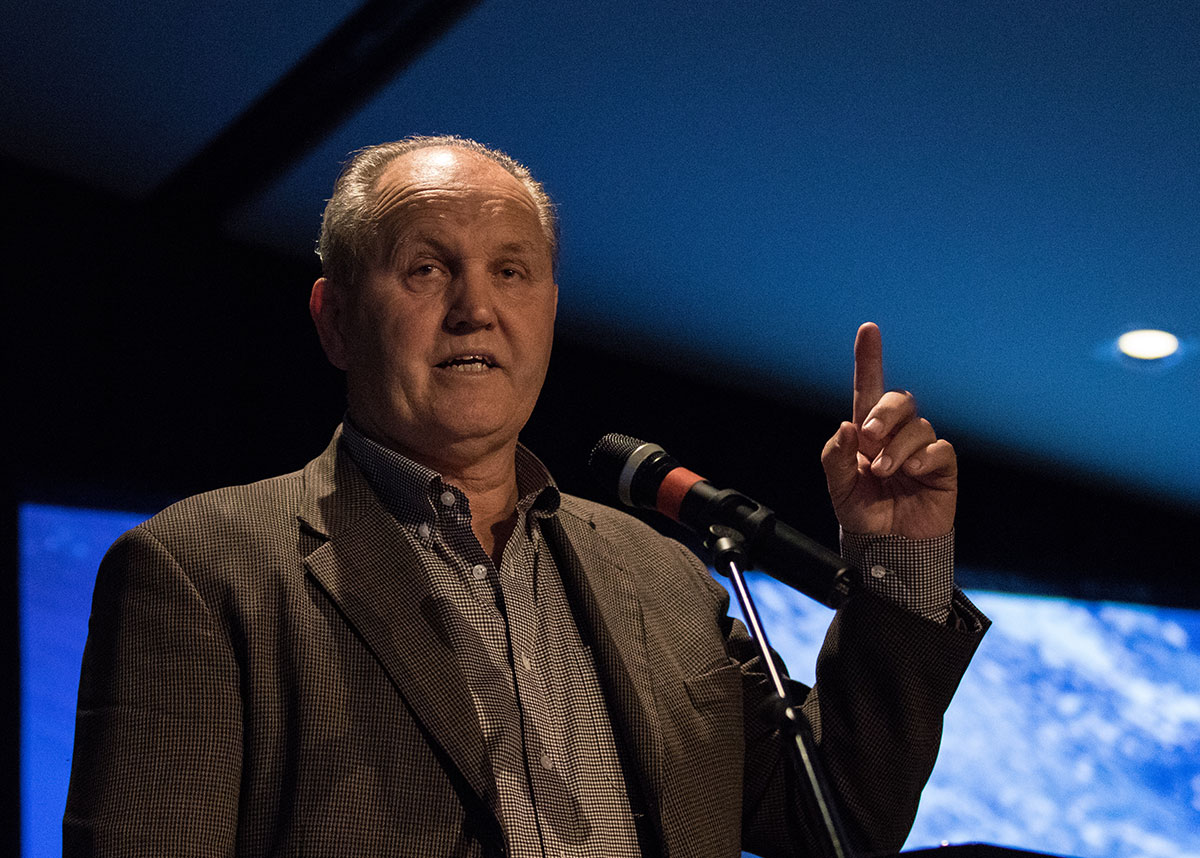
Steven Renata responds to the challenge of pronouncing places, plants and animals.
... READ FEATURE
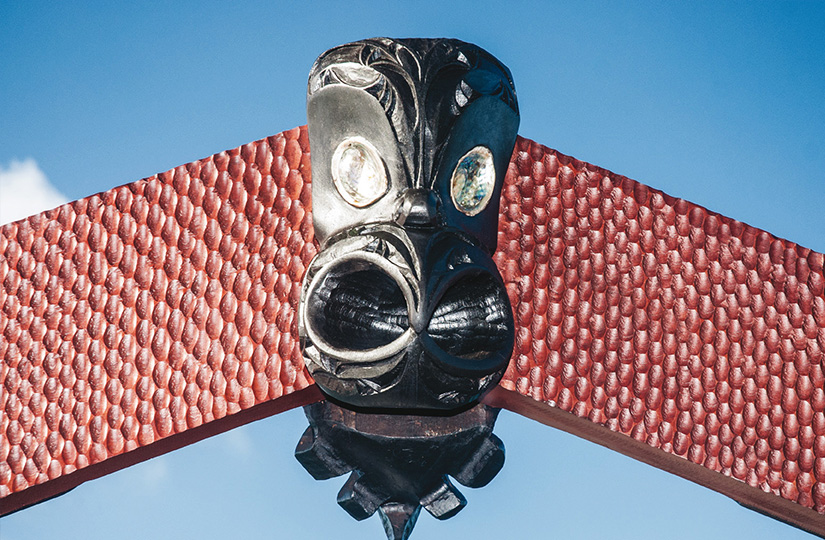
Several applications to seek customary marine title for areas within the Hauraki Gulf Marine Park have been submitted under the Marine and Coastal Area (Takutai Moana) Act, 2011.
The deadline for applications was 3 April 2017 and applications are currently being processed by the Department of Justice.
Applications have been submitted on behalf of whānau in the Pakiri and Waimango areas, the hapū of Ngāti Whātua Ōrakei in relation to the inner Waitematā, and the iwi of Ngāti Porou ki Hauraki in the Harataunga/ Kennedy Bay area.
The Marine and Coastal Area (Takutai Moana) Act 2011 acknowledges the importance of the marine and coastal area to all New Zealanders and provides for the recognition of the customary rights of iwi, hapū and whānau in the common marine and coastal area. Public access to the common marine and coastal area is guaranteed by the Act.
Further information is available here. Interview with Ngarimu Blair
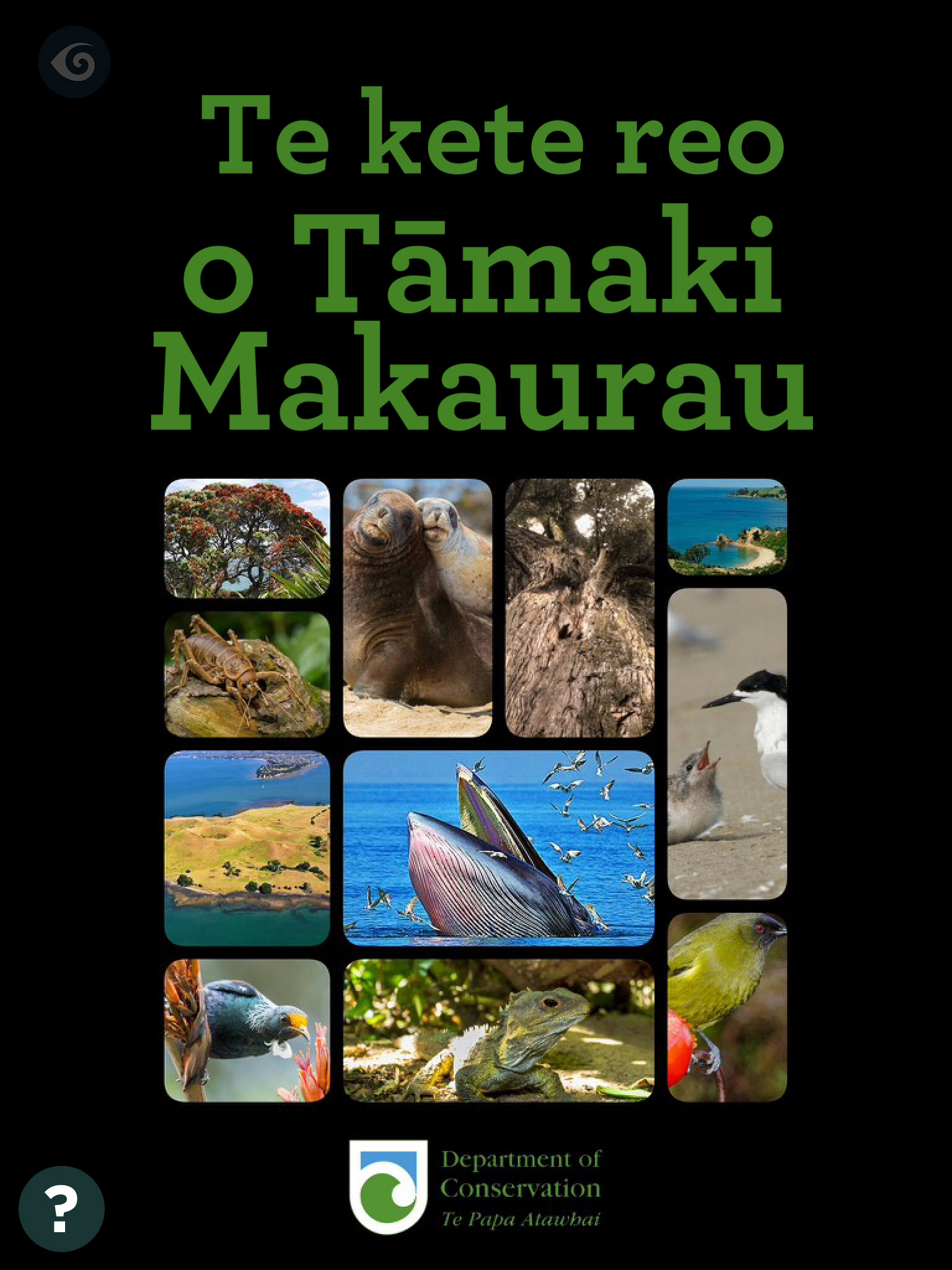
Have trouble pronouncing Māori words?
A new Department of Conservation App, ‘Te kete o Tāmaki Makaurau’, has been designed to help people identify and pronounce the names of popular places, animals, and plants in the Tāmaki Makaurau/Auckland region in Te Reo Māori.
The app enjoyed the highest number of downloads in one day and recently sat as the third most downloaded app in New Zealand.
Read more here

A Hauraki Gulf / Tikapa Moana marine spatial plan launched in December after three years work by a stakeholder working group is available on the Sea Change – Tai Timu Tai Pari project website.
The proposed plan contains five pathways designed to create long-term health and wellbeing for the Hauraki Gulf Marine Park. Transitions to high value wild caught and farmed fisheries, the creation of marine reserves areas and scaled up restoration initiatives, setting load limits and mitigation for sediment and nutrients, local-scale coastal management and ambitious public engagement are outlined in the December issue of the Gulf Journal.
Read it here
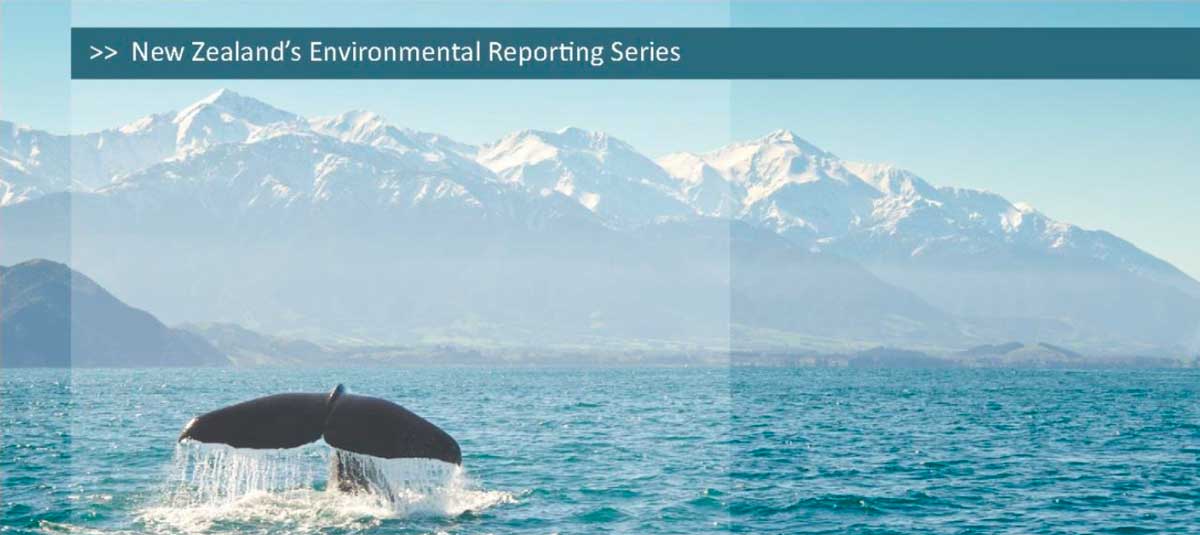
The Ministry for the Environment and Statistics New Zealand released the first individual “domain” report – on the marine environment – created under the Environmental Reporting Act 2015 in November.
The report identifies key issues facing our oceans, ocean acidification, threats to native birds and marine mammals and the state of coastal habitats.
Environment Minister Dr Nick Smith said environmental reports are fundamental to understanding and addressing environmental challenges – an area where data has been lacking.
He also said next year new legislation would replace the Marine Reserves Act “to bring our marine legislation into the 21st Century, recognising that we need varying levels of protection.”
Read it here
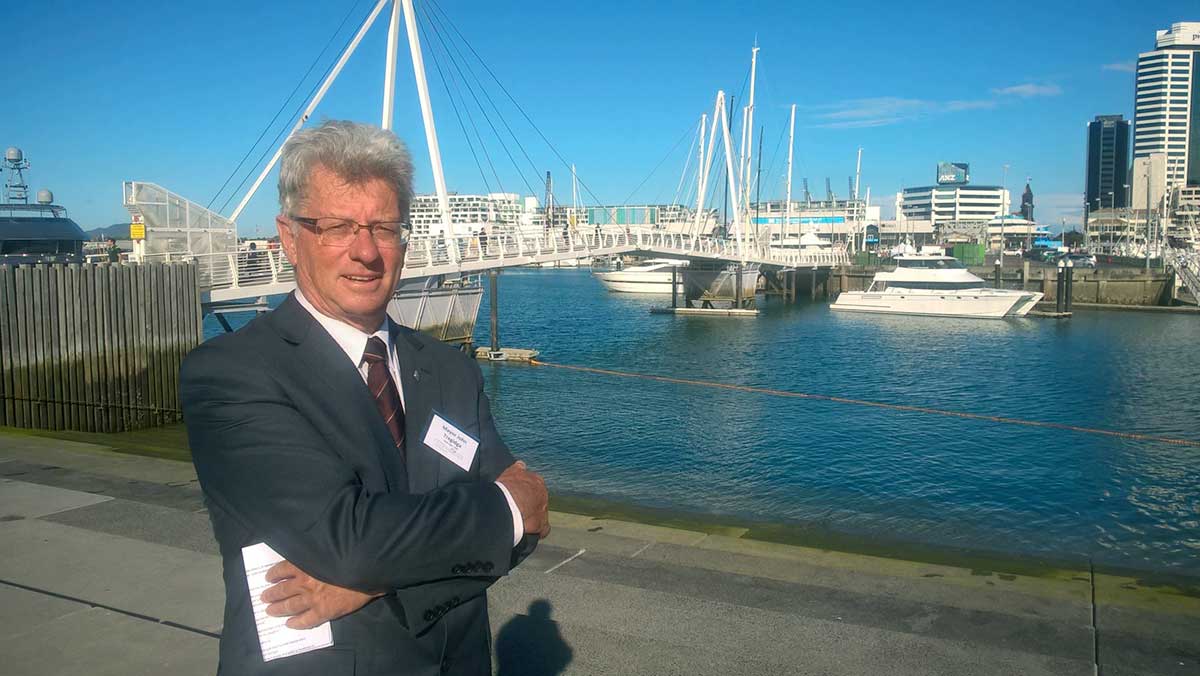
Innovative pathways result from wide enquiry and involvement
... READ FEATURE
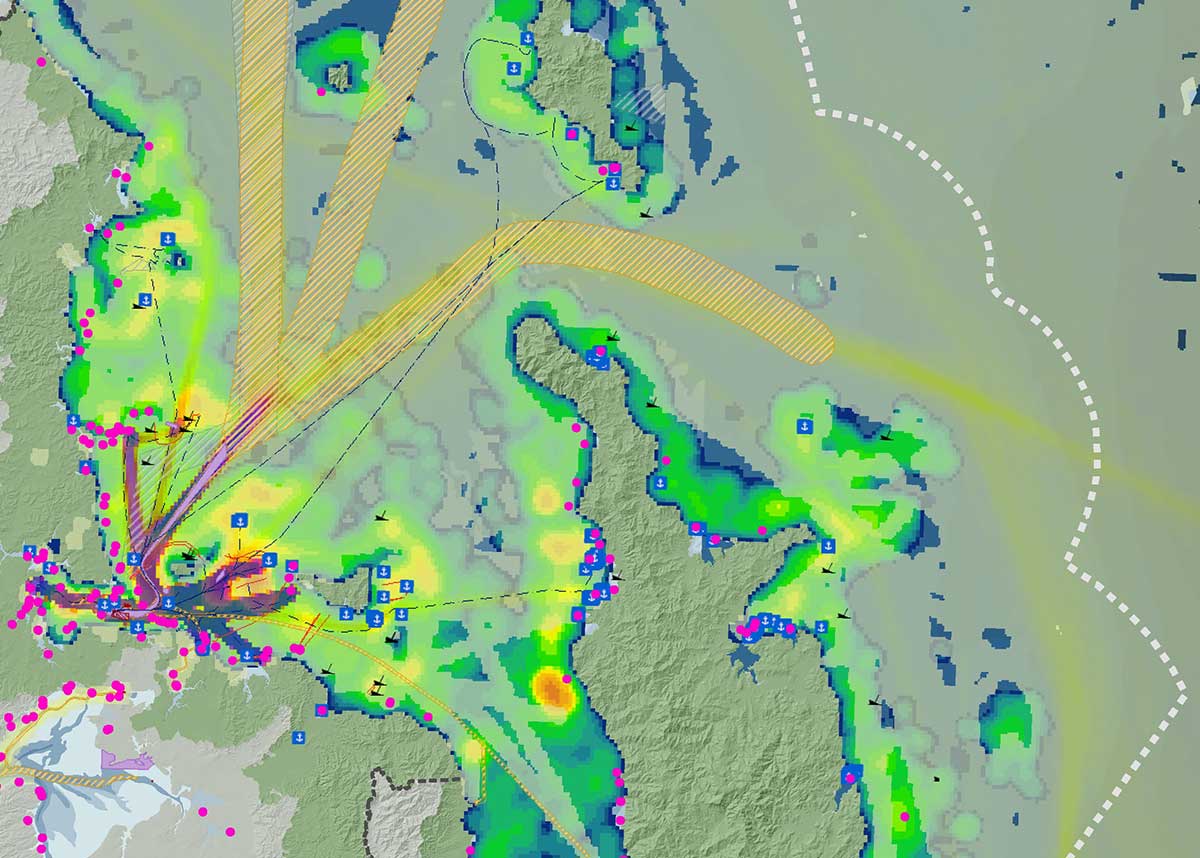
Novel mechanism to provide for mana whenua and communities
... READ FEATURE
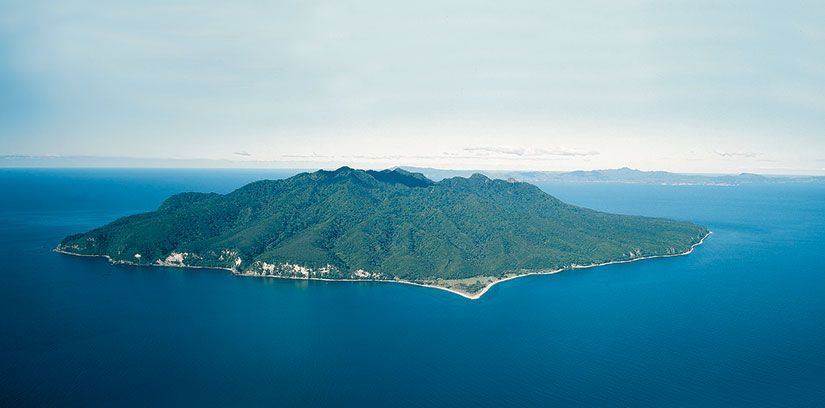
The public has until October 11 to submit on a draft Conservation Management Plan for Te Hauturu-ō-Toi/Little Barrier Island Nature Reserve.
The draft ten-year plan has been prepared by the Department of Conservation in consultation with the Ngāti Manuhiri Settlement Trust and the Auckland Conservation Board.
It is part of a redress contained in the Ngāti Manuhiri Settlement Act 2012 that acknowledged Ngāti Manuhiri as kaitiaki of the Nature Reserve and provided for co-governance.
Carvings and tukutuku panels produced over the past 15 years have been unveiled at a ceremony on Waiheke’s Piritahi Marae.
A new whare whakairo is the latest initiative of the inter-tribal, community marae established in 1981 on council land bordering Hurinui Bay.
The marae welcomes people from all places, while recognising and respecting Ngati Paoa as mana whenua and the interests of the wider Pare Hauraki iwi.
Read more here
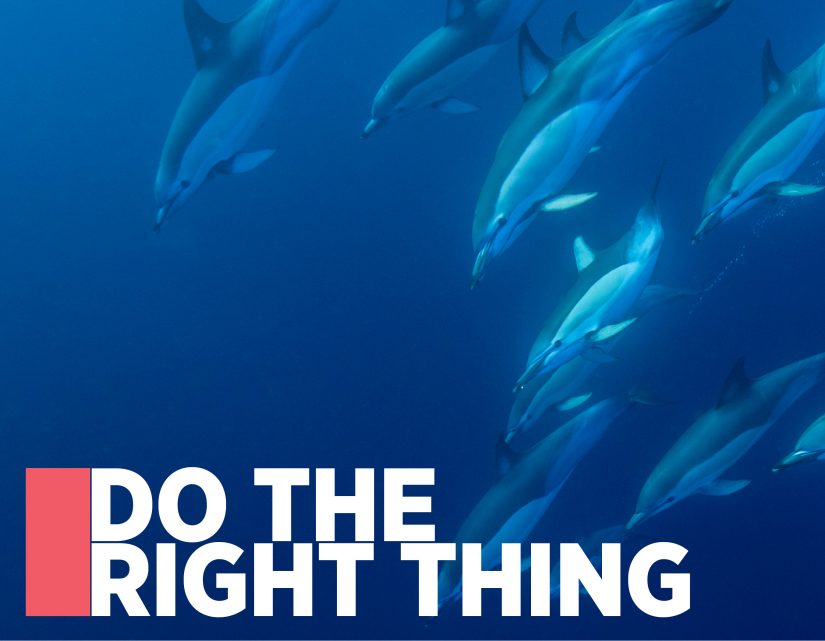
The 2016 Hauraki Gulf Marine Park Seminar asks what it takes to Do The Right Thing
- Can our primary industries reinvent themselves and their relationship with ecosystems?
- What is people-power unleashing around our islands, reefs and harbours?
- How can 600 years of indigenous knowledge and culture inform the way?
- Are fly fishing for kahawai and sailing with whales signs of the times?
- And where might the government fit in all this?
The Hauraki Gulf Forum has assembled an outstanding line-up of speakers for its seventh annual seminar on Tuesday, September 13 at Auckland Museum.
Book here
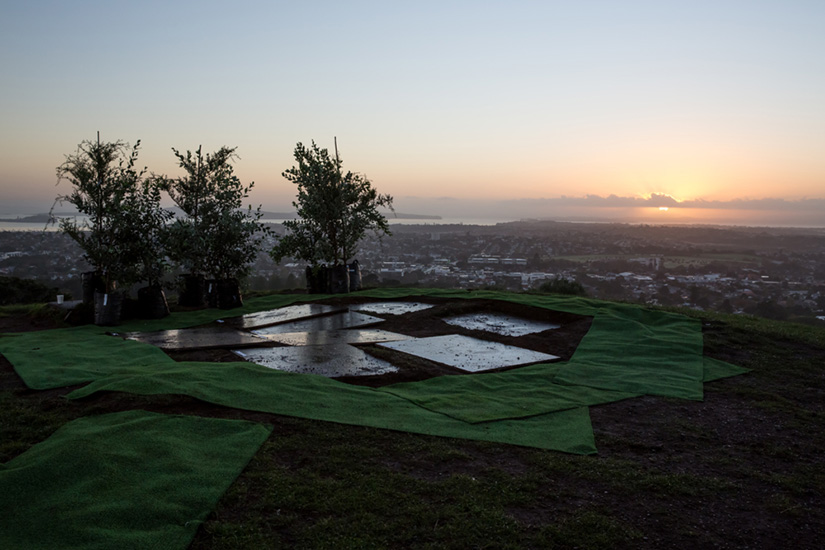
Three young tōtara and six pohutukawa were planted in a dawn ceremony on the tihi of Maungakiekie/One Tree Hill in June. It marked an historic moment for mana whenua following the return of Maungakiekie to them in the landmark Ngā Mana Whenua ō Tāmaki Makaurau Collective Redress Act.
Read more here
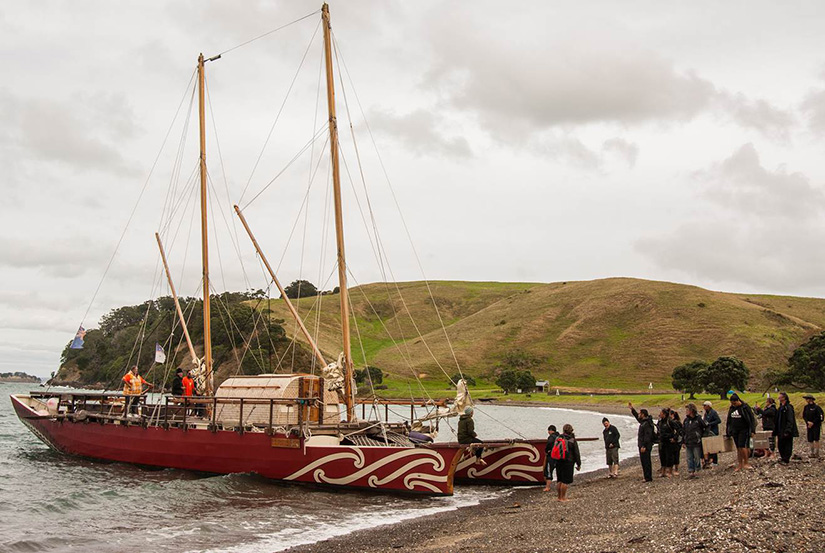
Three of the North Island’s rarest kiwi caught a waka to their new home in the Hauraki Gulf in April.
The adolescent birds were released into the predator-free environment of Motutapu Island as part of an effort by several conservation groups to save the Coromandel brown kiwi.
The three kiwi, two female and one male, were found as eggs in Thames, taken to Auckland Zoo for incubation and then raised on Rotorua Island.
Ngāi Tai ki Tāmaki chair James Brown said the journey was symbolic and signified traditional protocols and rituals.
They joined 22 other kiwi released on the island. Shore plovers and patake have also been released on Motutapu in recent months.
Read more here
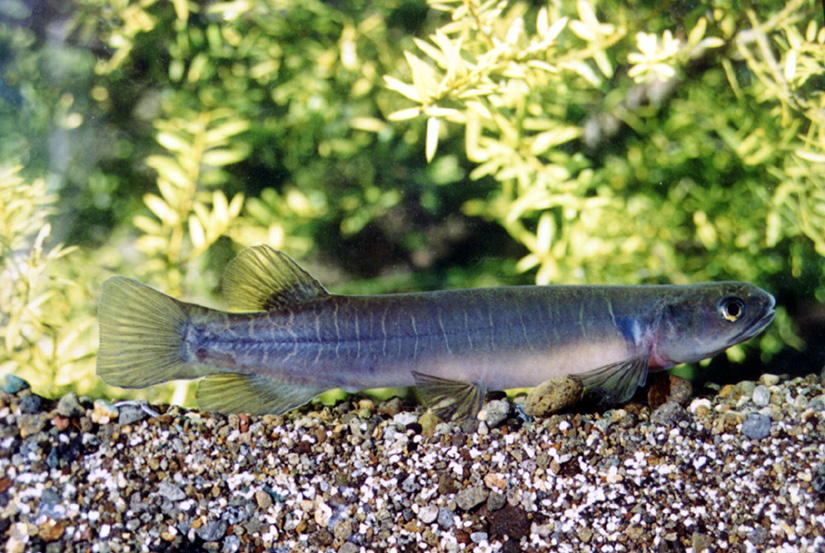
Restoration of mauri and ecosystem functioning on lands managed by Ngāti Whātua Ōrākei has been boosted by studies at several locations.
The report by Phoebe Balle for Ngāti Whātua Ōrākei, Auckland Council and University of Auckland recorded vegetation, plant and animal pests, birds, lizards and water quality at Whenua Rangatira (Bastion Point), Pourewa Creek Recreation Reserve and Anamata Creek (Opanuku tributary).
The results will provide a baseline and monitoring framework by which to measure the success of restoration investments.

Mātauranga Māori, both the knowledge and the approach, is the culmination of over 600 years of living within and part of the ecosystem.
... READ FEATURE
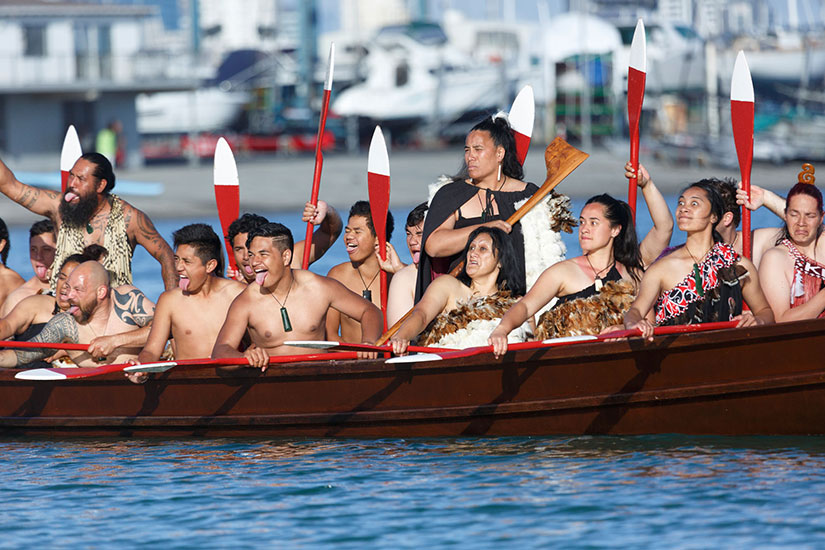
Waka racing has returned to the Waitematā.
The inaugural Tāmaki Herenga Waka Festival was hosted on Auckland Anniversary weekend in January, reviving a 150 year old tradition.
The programme included competitive inter-tribal races and opportunities for the public to paddle a waka and learn about their cultural significance.
Orakei Water Sports president and Hauraki Gulf Forum member Moana Tamaariki-Pohe said the gathering of waka ama, waka tangata, waka taua and waka hourua represented a dream come true for her father, Ngati Whatua kaumatua Tamaiti Tamaariki.
Read more here
The Auditor-General has released a report identifying principles for effective co-governing of natural resources.
It includes case studies of how co-governance – involving iwi, central and local government and community groups – has assisted six environmental projects to achieve their goals.
Auditor-General’s overview of principles for effectively co-governing natural resources.
The submission period on the Government’s proposed new approach to marine protection closed this month.
A consultation document outlines four new forms of protected areas – marine reserves, species-specific sanctuaries, seabed reserves, and recreational fishing parks – to replace the Marine Reserves Act 1971 and proposes a recreational fishing park in the inner Hauraki Gulf.
The Hauraki Gulf Forum recognises a new approach is needed and sees potential in application of the new categories in the Hauraki Gulf/ Tikapa Moana.
Its advocacy for the Sea Change Tai Timu Tai Pari marine spatial planning process is also consistent with the approach’s emphasis on collaborative process.
Chairman John Tregidga said a carefully integrated package of measures was needed to address the issues of decline identified through recent State of our Gulf assessments and to resolve protection and utilisation needs.
MFE: Marine Protected Areas

Four islands of the Tīkapa Moana/ Hauraki Gulf were vested back to the Crown on 31 September, after a month in iwi ownership; part of a Treaty of Waitangi redress settlement reached in 2014.
Rangitoto, Motutapu, Te Motu-a-Ihenga (Motuihe), and Tiritiri Matangi were transferred to the Tupuna Taonga Trust, representing the interests of 13 iwi of Tāmaki Makaurau.
Four bronze plaques were unveiled at a ceremony on Maungauika/ North Head to be installed on each of the islands to acknowledge the deep connections iwi have with the motu and the generosity of the vest back for the benefit of the people of Aotearoa.
A Conservation Management Plan for Rangitoto, Motutapu, Te Motu-a-Ihenga and Motukorea (Browns Island) is being developed in partnership with iwi to ensure that the iwi o Tāmaki Makaurau have ongoing involvement in the governance and management of the islands.
Iwi the gift that keep giving
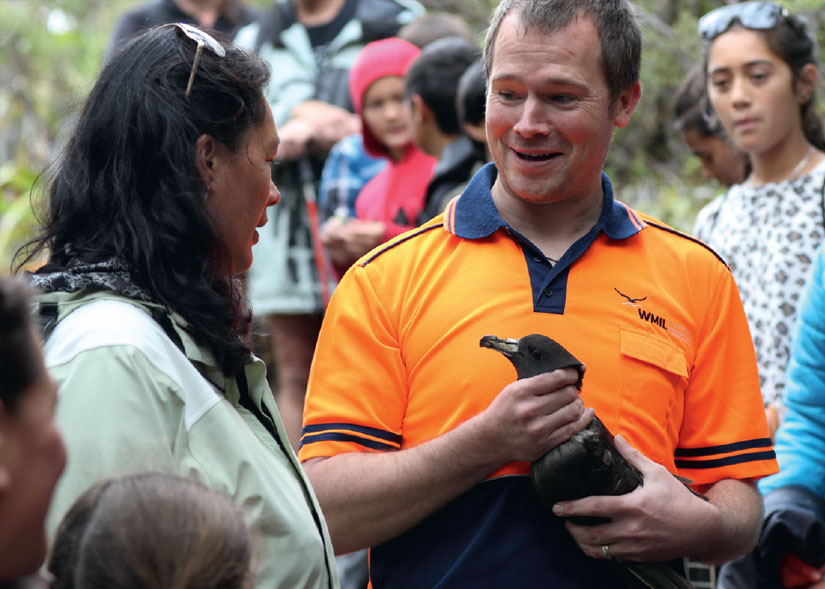
Ngāti Rehua-Ngātiwai ki Aotea welcomed tāiko back to Great Barrier Island/Aotea in November, alongside representatives from the fishing industry, government, environmental organisations, and the local community.
Chairperson of the Ngāti Rehua – Ngātiwai ki Aotea Trust Board Nicola MacDonald said “All seabirds are precious taonga to Nga ̄ti Rehua-Nga ̄tiwai ki Aotea people and even more so the tāiko who breed exclusively on our sacred maunga Hirakimata and Hauturu-a-toi. We want to ensure that the last remaining colonies of ta ̄iko are protected to ensure they remain part of our natural heritage and legacy for all future generations of New Zealanders.”
Tāiko/black petrels return to breed on Great Barrier and Little Barrier after a winter feeding off South America. They are vulnerable to accidental capture on long lines. The three largest fishing companies in the Gulf attended the ceremony and are committed to seabird smart fishing practices, facilitated through the work of Southern Seabird Solutions Trust.
www.southernseabirds.org.nz
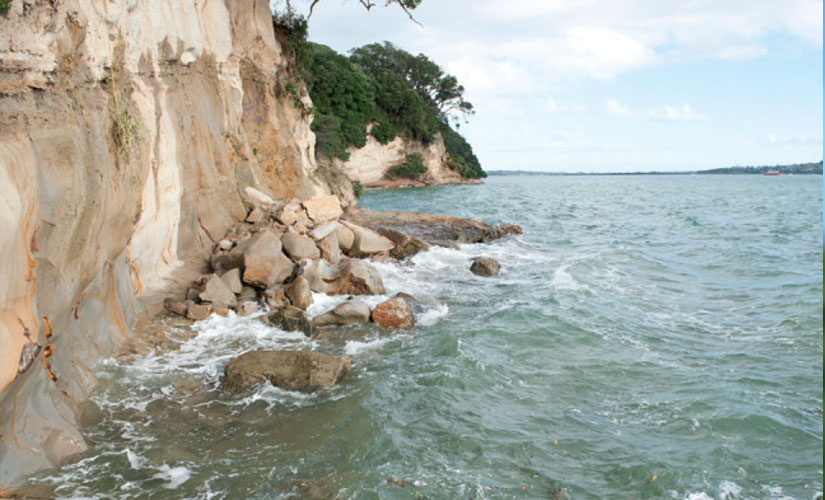
The Crown signed a deed of settlement with Ngāi Tai Tāmaki at Umupuia Marae, Maraetai in November.
The deed settles the historical grievances of the iwi and includes an acknowledgement and apology for the acts, omissions and historical breaches of the Treaty of Waitangi committed by the Crown.
Ngāi Tai Tāmaki were rendered virtually landless by the late nineteenth century. In the decades following the signing of the Treaty, the Crown acquired large tracts of land in the iwi’s rohe and confiscated 51,000 acres of land from the East Wairoa area.
“This settlement provides a basis for Ngāi Tai Tāmaki to develop a much stronger future and an opportunity for a genuine partnership with the Crown,” said Minister for Treaty of Waitangi Negotiations Christopher Finlayson.
Ngāi Tai Tāmaki is a member of the Tāmaki Collective and one of the twelve iwi of the Hauraki Collective.
Its area of interest is centred in Tāmaki Makaurau/Auckland extending to Hauraki/Coromandel and, in particular, the coastline, harbours and islands of the Tīkapa Moana/Hauraki Gulf and Waitematā Harbour.
Deed of Settlement documents
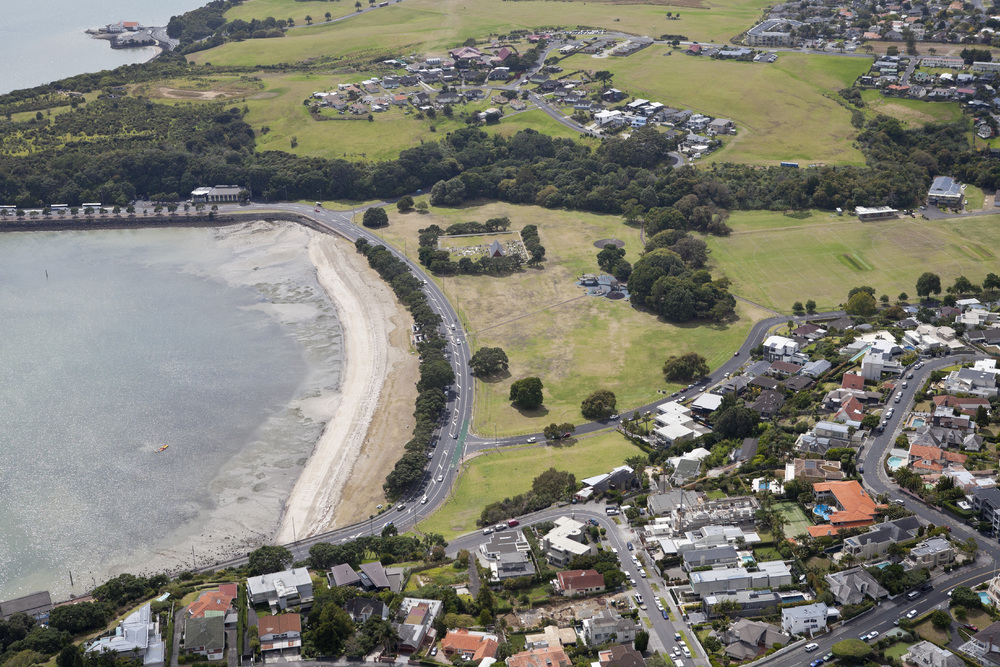
Matariki, the Māori New Year, starts this year on June 18 and more than 100 events are planned in Auckland alone.
Ngāti Whātua Orākei invites volunteers to help restore coastal forest in its Ko Te Pukaki project on June 20 at Takaparawhau (Bastion Point). NatureWatch NZ, a monitoring tool to help community groups understand changes in response to restoration projects, will be demonstrated through the day, followed by a hangi.
www.matarikifestival.org.nz
www.naturewatch.org.nz
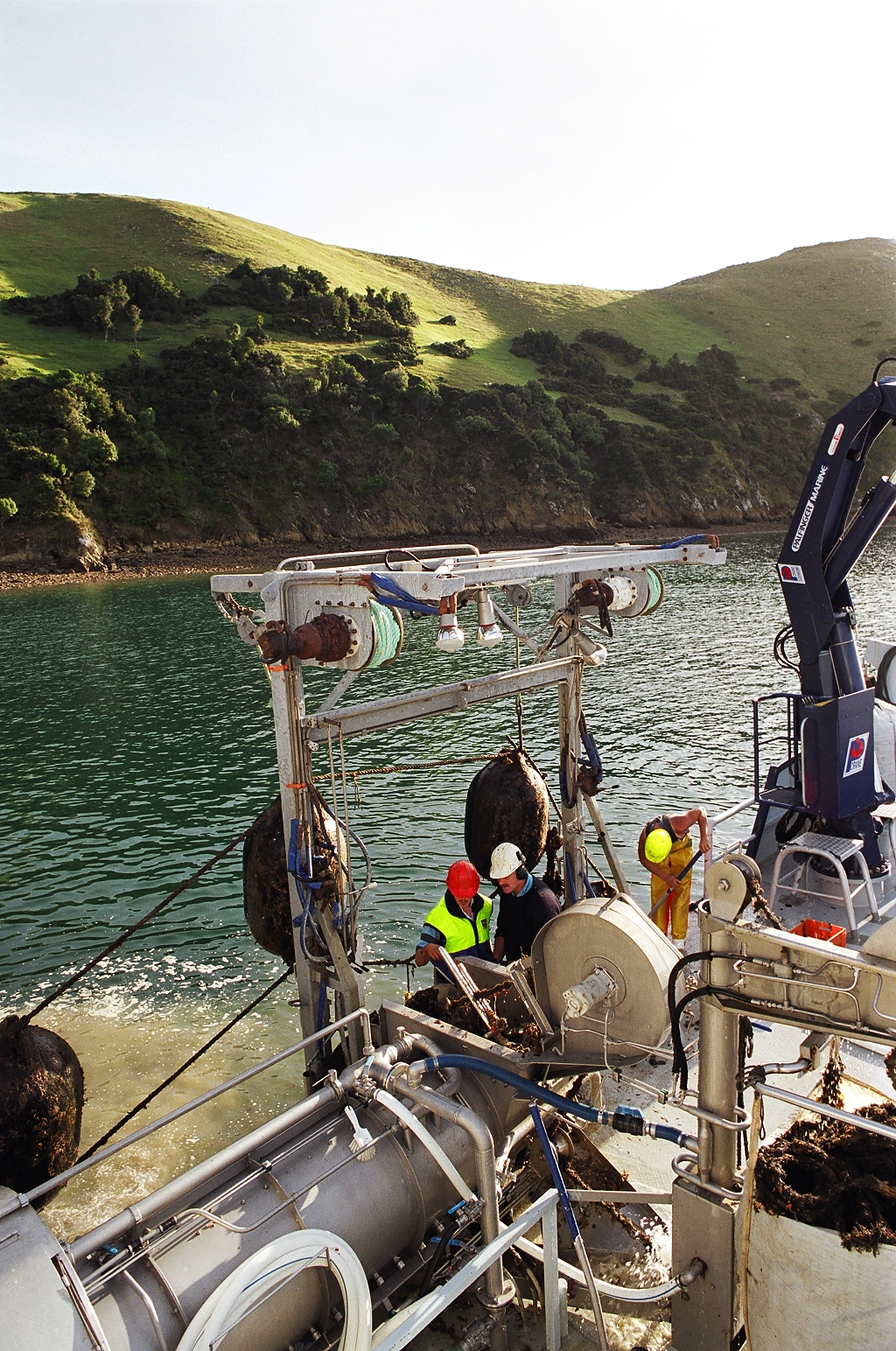
New Space Regional Aquaculture Agreements have been signed with iwi in three regions, including those from Auckland.
Minister for Primary Industries Nathan Guy said the agreements would help cement the partnership between the Crown and iwi and increase iwi participation and share in New Zealand aquaculture, which contributes 20 per cent of total fisheries production and 15 per cent of revenue.
The agreements are the result of the Māori Commercial Aquaculture Claims Settlement Act 2004, which requires the Crown to provide iwi aquaculture organisations with 20 percent of new commercial aquaculture space consented since October 2011, or anticipated to occur into the future.
“Through these agreements Māori will have the opportunity to be involved in aquaculture wherever it occurs in New Zealand,” Nathan Guy said.
New Aquaculture Agreements Signed










































